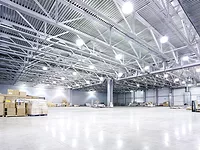Polyurethanes Offer a Long-Lasting Alternative
“It’s so varied and so widespread in terms of use that most people actually confuse it for other things like PVC or styrene,” said Carl Blomstran, owner of Cardina Inc., a consulting firm in Houston that deals with polyurethane applicators and chemical manufacturers. “It’s remarkably versatile in its application and the superior performance makes it especially valuable as a material.”
Blomstran has worked with SWD Urethane Co., Mesa, AZ, a leading processing and manufacturing company specializing in polyurethane foam systems, specialty coatings and polyols.
What Are Polyurethanes?
Polyurethanes are an engineering material created by a production process that mixes polyisocyanate and polyol chemicals. The combination allows PUs to be formulated with greatly varying properties, from stiff and hard to soft and flexible (the strength of plastics or the flexibility of rubbers), depending on the desired application. By using additives, catalysts or a blowing agent, PUs can be formulated as a padding, binder, coating, sealant, or filler. Because polyurethanes are fully controllable, they can be dispensed as a flexible foam, froth, elastomer, rigid forms, spray, pour or injected material. “The only control you have with ordinary thermoplastics is that you control the shape of the part you are making,” said Blomstran. “What’s great about PU is that the person who makes the part controls the chemistry, so if they want it hard or soft, heavy or light, durable or one that will wear down over time, they can control that by picking the proper chemicals.”
Why Choose PUs?
Besides the versatility, a part manufactured by polyurethanes could last up to 10 times longer than a part made from another material. All PUs share high abrasion resistance, impact and tear resistance, a high load-bearing ability, exceptional thermal insulation capabilities, and adhesive qualities with high strength-to-weight ratios. While PUs may be more expensive up-front, the longevity of the material means cost-effective operations, lower maintenance and fewer replacements over the long term.Polyurethane Applications Coatings
Polyurethane coatings have provided long-lasting protection in our homes and on marine vessels in the form of finishes and paint. A PU topcoat over a stain on a kitchen table, for instance, can last years, be very difficult to wear out and produce a beautiful glossy shine. This durable finish has also been applied on boats to protect from the harsh elements of salt water. Special coatings to provide impact, abrasion and corrosion resistance are available as truck bedliners, tank linings, floors, highway construction, bridge repairs, and other uses.At Creative Coatings, a provider of spray-on truck bedliners in Monroe, LA, PU spray-on capabilities is evident in their range of applications, including pick-up trucks, silos, trailers, decks, hot tubs, dump trucks and RV roofing. One of the more peculiar items on which they apply PU is the toes of baseball cleats.
“We sponsor a baseball team and they were spending $140 on pitchers’ shoes that wore out every three games because the pitchers drag their feet,” said Paul Hansen, owner of Creative Coatings. “So we brought the shoes in and sprayed the toes with urethane. They look like patent leather and now they last all season. It worked out so great that everyone on the team has their shoes sprayed.”
PUs are also used to coat the bottoms of pools and spas to provide a durable, permanent and colorful lining that won’t fade, crack or leak. For inside the spas, PU foam is used to create longer lasting cushioned seating that won’t rot or decay for added comfort.
Construction
The construction industry has been turning to polyurethane for years to improve quality and ensure that customers do not suffer failures further down the road. Through the use of rigid polyurethane foam, buildings meet energy saving targets and reduce cost over the long term. Additional benefits of rigid foam include superior adhesion to building faces, compatibility to common facings like glass, steel and aluminum, reduced thermal conductivity, fire and chemical resistance, and the ability to be made to a very low density. Other parts of the building, including floor finishes and intricate molding details, benefit from PUs’ durability and processability.“Because the foam can be formulated to be dense, with structural properties, builders have been using it to make decorative, intricately shaped architectural details,” said Blomstran. “Rather than hand-carving wood, they make a mold and fill it with foam. The strength and density of the material allows it to be screwed and mounted. Builders have the advantage of what appears to be hand-carved architectural details but at a reasonable cost.”
Superlite Block, the largest manufacturer of concrete blocks in Arizona, has developed the Integra System, an unusual residential and commercial construction application combining urethane and concrete. Superlite makes a specially designed H-shaped block that reduces thermal bridges by eliminating the two end spans. They fill the inside of the block with PU foam, adding energy efficiency, strength and sound resistance to masonry construction
“There are a lot of benefits with a block structure such as durability, longevity, fire resistance and sound resistance, but it isn’t as energy efficient as other methods,” said Integra Systems Manager Dave Endres. “So we developed the Integra system, which puts the urethane inside, to utilize blocks in an energy efficient manner.”
PUs are also being used in construction for exterior finishes. A homeowner building a house on a cliff wanted the structure to blend seamlessly into the natural surroundings. To do this, the outside of the house was sprayed with PU, colored to match the shade of the landscape and textured to blend with the natural terrain.
Insulation
As insulation, PUs are nearly unmatched for both thermal and electronic applications. PU foam has one of the lowest thermal conductivity ratings of any insulant, allowing for efficient retention of heat or conversely, the maintenance of a refrigerated environment. PU foam is used in refrigerated containers, trucks, cold storage and refrigerated display counters. In fact, most of the roughly 650,000 refrigerated containers in use around the world are insulated with rigid polyurethane foam.“The advantage of PU insulation is that because you can handle the liquid chemicals and spray it as foam-in-place, the insulation will fit strange angles and contour to the shape of what you are building,” said Blomstran. “Not only will this last longer, it will provide a more thorough and efficient seal, without awkward corners or joints.”
PUs are also used as insulation for electrical and electronic components. The lightweight and durable casting system satisfies the most stringent demands of switchboard operations.
Marine
Rigid flotation foams for use in the marine industry have added flotation qualities and longer life to boats, docks and commercial vessels. Designed for hand pour or pour foam machines, as well as pressurized cylinder dispensing, the foam, once injected into the hull of a vessel, fills the cavity and makes the boat virtually unsinkable. On fishing vessels, the foam is often used as a lightweight insulating aid to prevent condensation in certain areas of ships.Furniture
We may not even know it, but polyurethane is all around us. PU flexible foam is used to add comfort and strength to the things on which we sit — including couches, office chairs and automotive seating — with superior support and longevity. The restful sleep we get on our beds is a result of soft PU foam filler. The same product is also used in racquet handles, head rests, taxidermy forms, and prosthetics.
Pour and froth foams can also be made to simulate wood in furniture products, to conserve resources and provide a longer lasting material. It also allows for more interesting shapes in the designs to be constructed. The PU material can be screwed, nailed, sawn and doweled like ordinary wood and can be finished with colored paint or varnish for a cost-effective, environmentally conscious alternative to real wood.
Safety Bumpers
A unique combination of polyurethane’s versatile nature is being produced by Bayer Inc. in the form of a new automotive bumper. By combining the elasticity and shock dampening capabilities of PU foam with a damage resistant elastic PU outer skin, Bayer has created a bumper meeting strict new European standards that reduces injuries to pedestrians when struck by a vehicle, as well as reducing damage to the vehicle in minor traffic accidents.Unusual Applications
The flexibility and versatility of PUs allows them to be used in applications that are out of the ordinary but offer significant advantages over the traditional way of doing things.Nevada Spray Foam in Henderson, NV, is a urethane application company specializing in roofing systems, flooring, wall applications and other construction uses for urethane. Lee Mattson, owner of Nevada Spray Foam, explained how they apply urethane foam to create outdoor artwork that lasts longer.
“We’ve made cats and Oscars with the foam. For statues and things that are outside and exposed to the weather, it is the best solution,” Mattson said. “We make a wire base frame, spray it with foam, carve it down, spray a hard coating over that and then it is painted. It creates a beautiful, long lasting, weather-resistant sculpture.”
“SWD custom-formulates products for many industries,” said Ron Whipple, marketing director at SWD, which also manufactures and tolls polyols, a major ingredient of polyurethane products and applications. “Your product idea or ours, we think it’s a good idea to consider strong, lightweight, cost efficient, energy saving polyurethane foam and/or specialty coatings for any business wanting to better compete in their market.”
Polyurethanes are also used on airplanes and movie sets, said Ed Lysek, president of Tri-iso, a specialty chemical distributor in Claremont, CA. Most airplane nose cones that enclose an aircraft’s radar are made of polyurethane, which is transparent to radar. In addition, the aircraft’s exterior is covered with polyurethane-based paint, which can withstand the intense weathering, temperature extremes and abrasion of aircraft exposure. In recent blockbuster movies, polyurethane’s versatility and moldability has made it the material of choice to enhance big budget sets and special effects, simulating icicles in a villain’s lair and creating realistic-looking dinosaur skins.
The tensile strength of one unique polyurethane formulation is such that it is applied to modern steel rollercoasters at theme parks for added security. Because of the extreme speeds and maneuvers of these newer coasters, more friction is created between the track and the car wheels. Without a PU coating on the wheels, this high friction would cause them to melt.
Cost
In some applications, PU systems can be a little more expensive up front, but over the long term, their durability tends to pay off in fewer repairs and replacement jobs. Also, for the manufacturer, cost can be controlled in some applications, simply by changing the formulation of the foam.“Since you can control the density of the foam, it allows you, for a given number of pounds of chemical, to make many more parts,” said Blomstran. “You can control your cost by adjusting your density. As manufacturers develop their parts for lower and lower densities, they are then able to compete successfully — with the glass fiber and styrene industry in the insulation market, for instance.”
For prospective applicators, users and dealers, polyurethane systems cost significantly less for business start up than other options with only a small investment in capital equipment and training. Working with SWD Urethane, suppliers receive manufacturer direct pricing and no franchise fees, making it a cost-effective business to start and grow. c
For more information on polyurethanes, contact SWD Urethane Co., 222 South Date St., Mesa, AZ 85210; call 800/828.1394; fax 480/461.6926; visit www.swdurethane.com.
Links
Looking for a reprint of this article?
From high-res PDFs to custom plaques, order your copy today!








